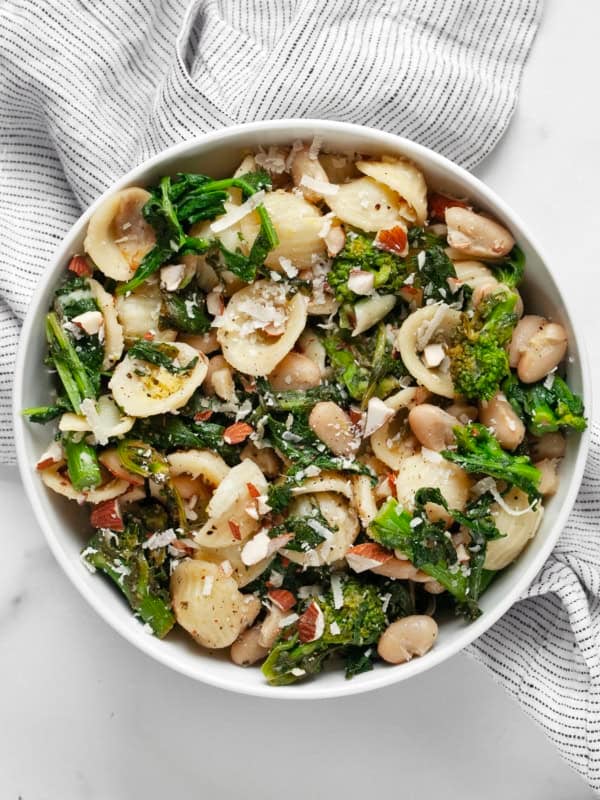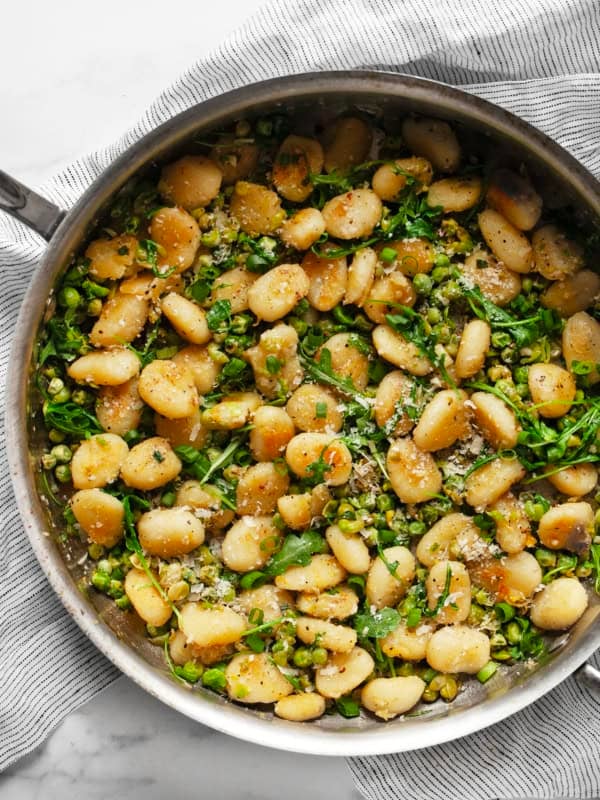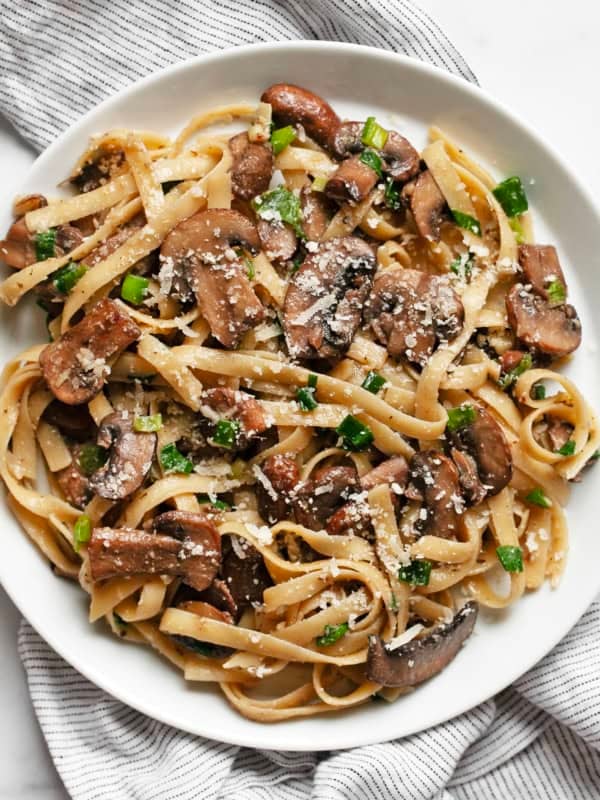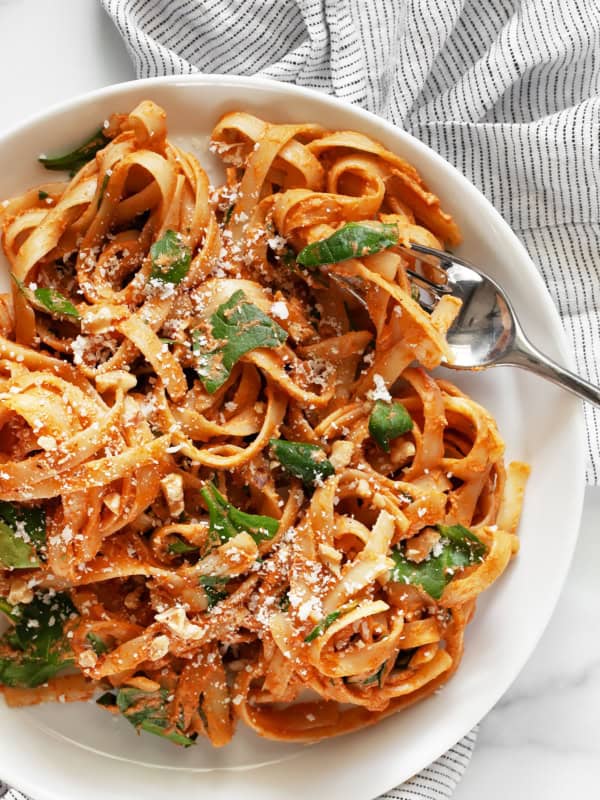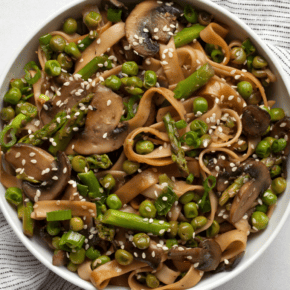Asparagus Stir-Fry with Mushrooms & Peas
on Apr 06, 2023, Updated Jul 08, 2023
This post may contain affiliate links. Please read our disclosure policy.
With udon noodles, mushrooms and peas, this asparagus stir-fry goes big on vegetables. Fresh ginger and garlic, along with scallions, give it lots of flavor. This is one of those recipes that’s great for a quick weeknight dinner. And it makes leftovers that you will look forward to eating on another day.
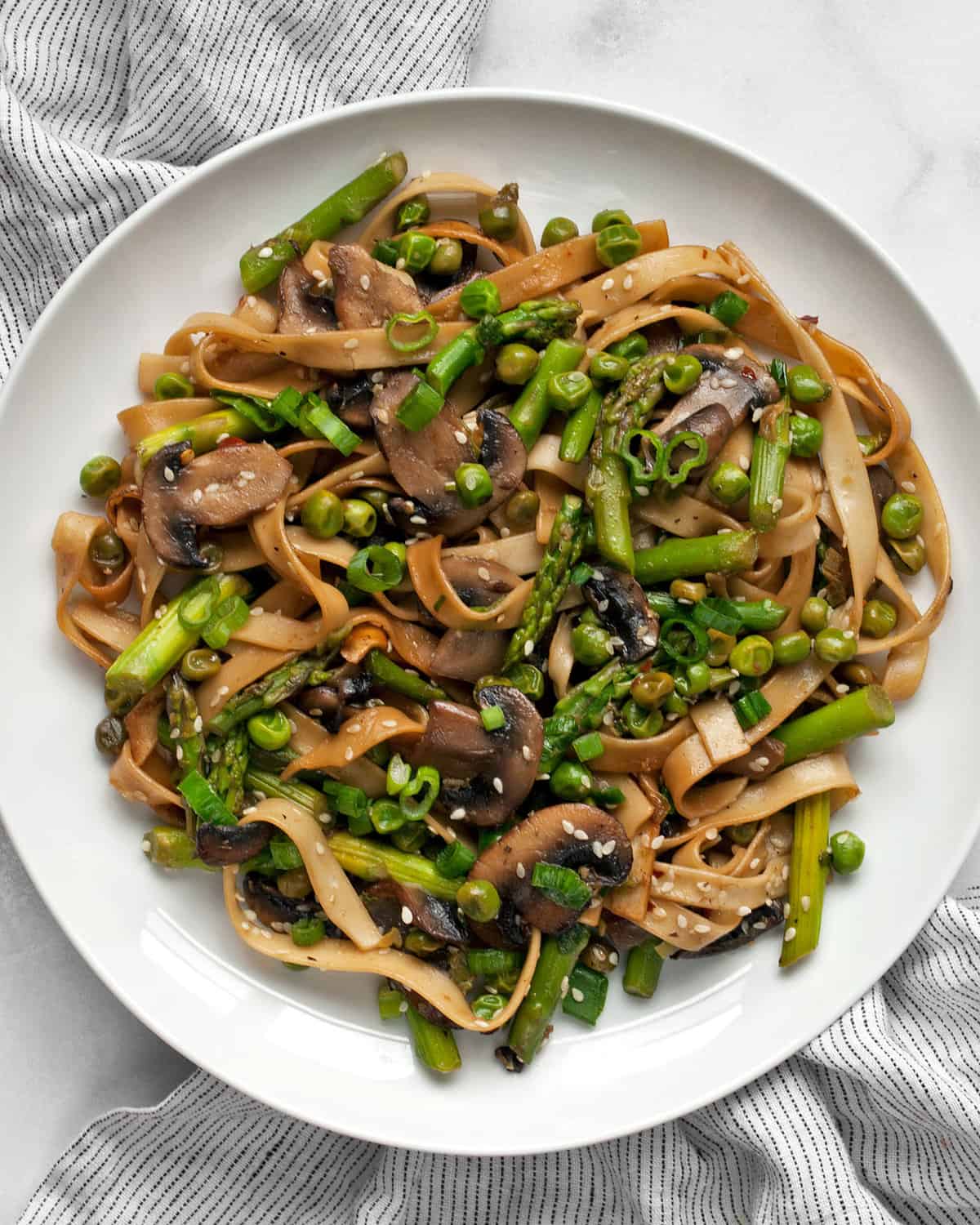
Table of Contents
Why You’ll Love This Recipe
It is a veggie-heavy stir-fry. No offense to noodles, but asparagus, mushrooms and peas make up the majority of the final dish with the noodles mixed in. Too often stir-fries go overboard on rice or noodles when all you want is a vegetable in each bite. This recipe does that and more.
The vegetables don’t take long to prep. You won’t be slowed down with cutting vegetables. It’s just the asparagus and the mushrooms. And if you want, you can buy sliced mushrooms instead of whole ones in order to save time.
You can eat leftovers as a cold noodle salad. This stretches it into multiple meals depending how many people you are serving. You can add shredded cabbage and even sliced carrots to go all in on transforming it into a salad.
The Ingredients
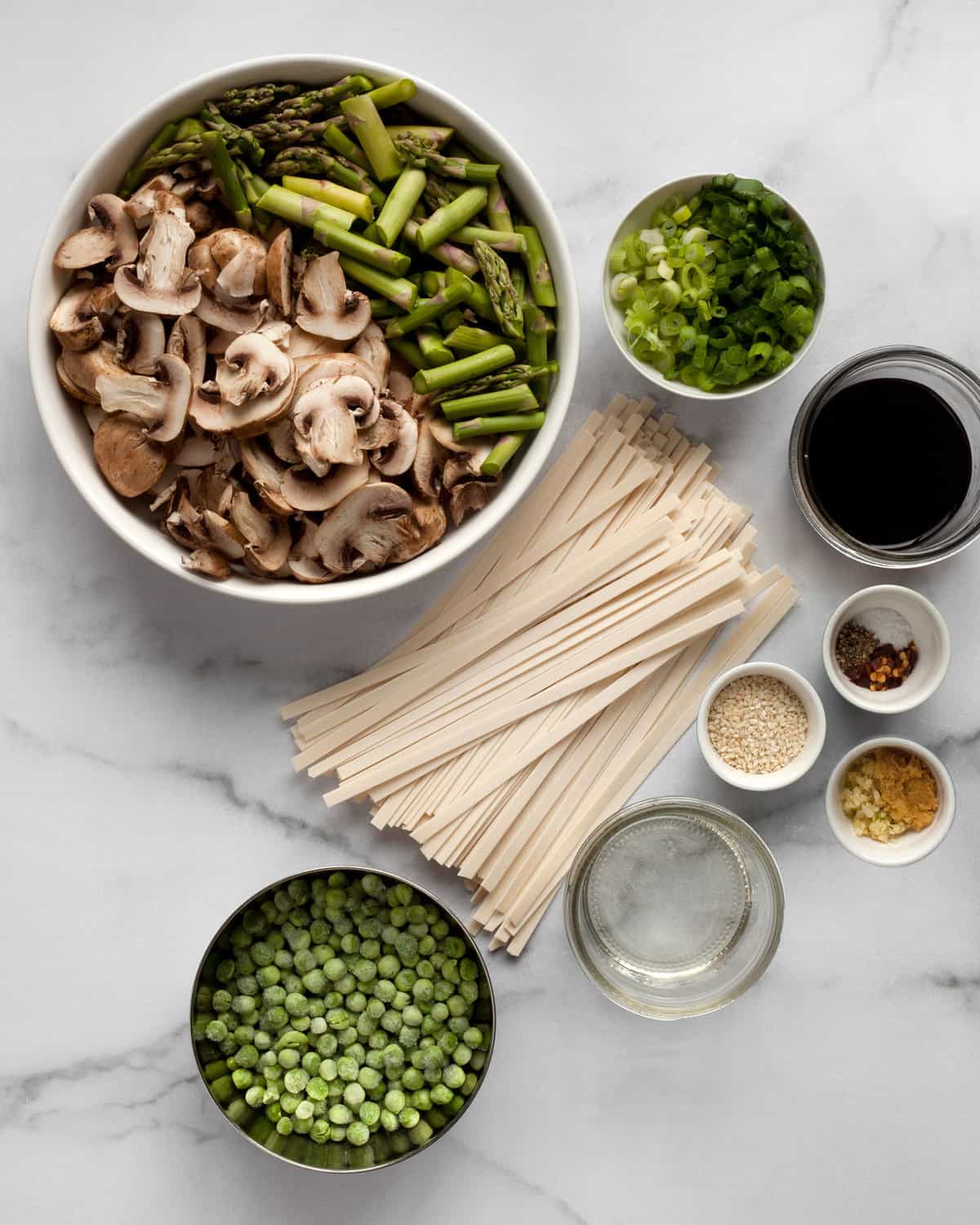
This is what you need:
- Udon noodles are Japanese noodles that are wide. They are made from wheat flour, so they are not gluten-free. But you can substitute with rice noodles.
- Asparagus: Look for bunches with asparagus spears that are firm and not limp. They should snap if you bend them in half. Also, the buds at the top of good fresh asparagus will be tightly closed.
- Mushrooms: Cremini mushrooms or baby bellas are more interesting than white button mushrooms. Before you cook them, brush off any dirt to clean them. As mentioned, you can buy sliced mushrooms for a shortcut.
- Peas: I always use frozen peas because they are so convenient and readily available. But yes, you can also use fresh peas.
- Garlic & ginger are very aromatic in the stir-fry.
- Scallions give that light green onion taste and a crisp bite.
- Soy sauce: Make sure to use low-sodium soy sauce, so the stir-fry won’t turn out too salty. Also, then you can control the seasoning level of the final dish. Use tamari if you need the recipe to be gluten-free.
- Red pepper flakes, salt & pepper are added with the garlic and ginger. They are there in limited quantity because it doesn’t take much for them to activate the flavors of the dish.
- Sesame seeds are a final garnish that adds some texture.
- Vegetable oil: Try to use a non-GMO veggie oil since you’re cooking on high heat.
How To Make this Mushroom Asparagus Stir-Fry
1. Cook the noodles until al dente according to package instructions. Then rinse them in cold water in a strainer.
2. Heat the oil in a skillet over high heat.
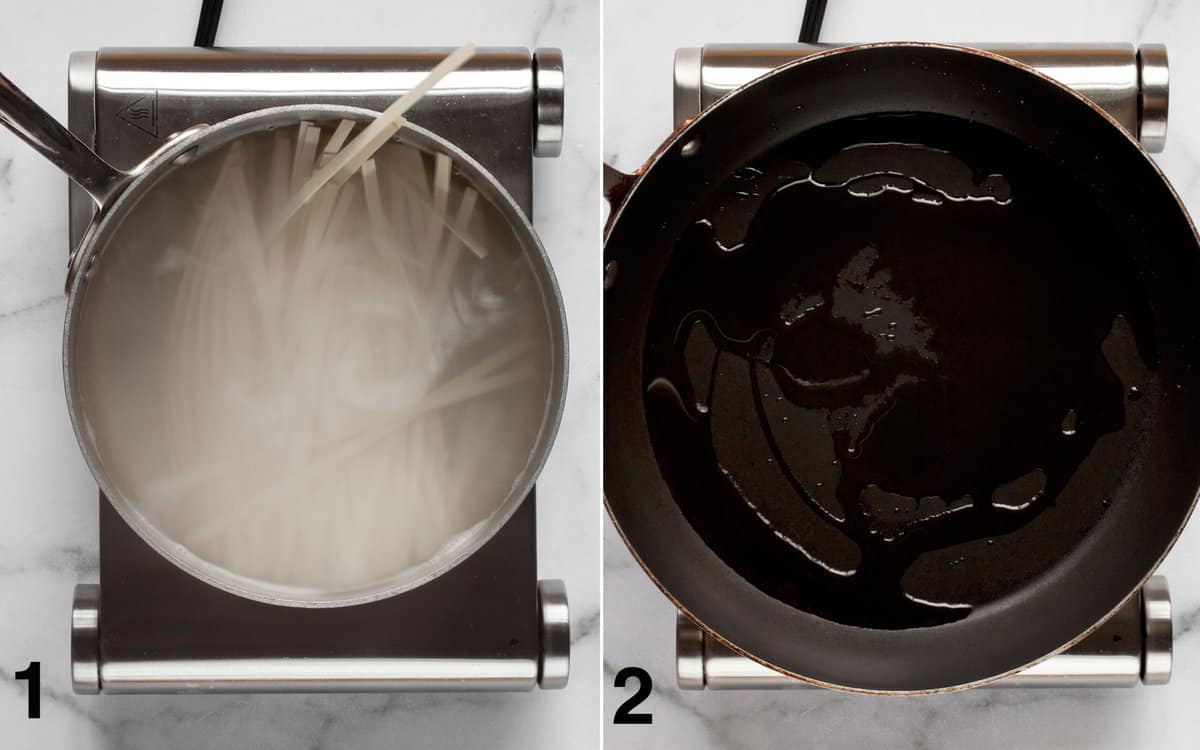
3. Sauté the mushrooms. Give them a few minutes to begin to soften.
4. Add the asparagus to the skillet. Cook for another 3 minutes. The asparagus should turn bright green.
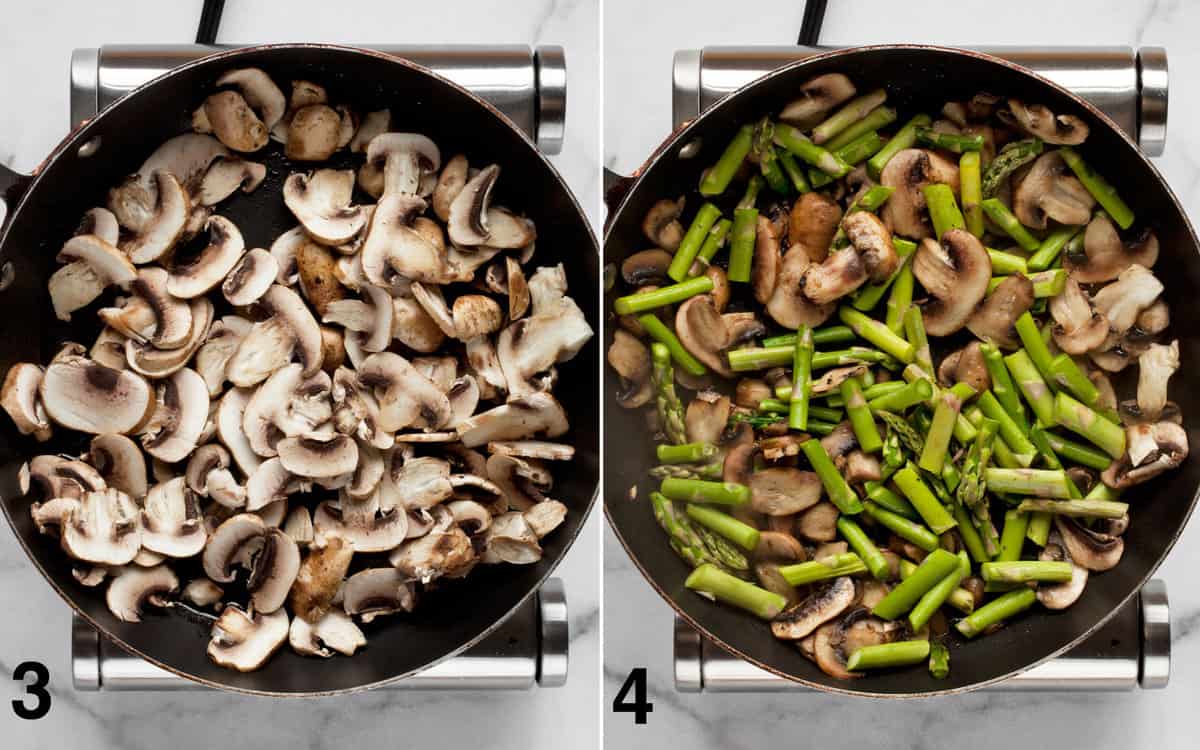
5. Stir in the peas and finish sautéing the vegetables. This will take 2-3 minutes.
6. Stir in the garlic, ginger, white parts of the scallions, red pepper flakes, salt and pepper. The vegetables will become fragrant in about 30 seconds.
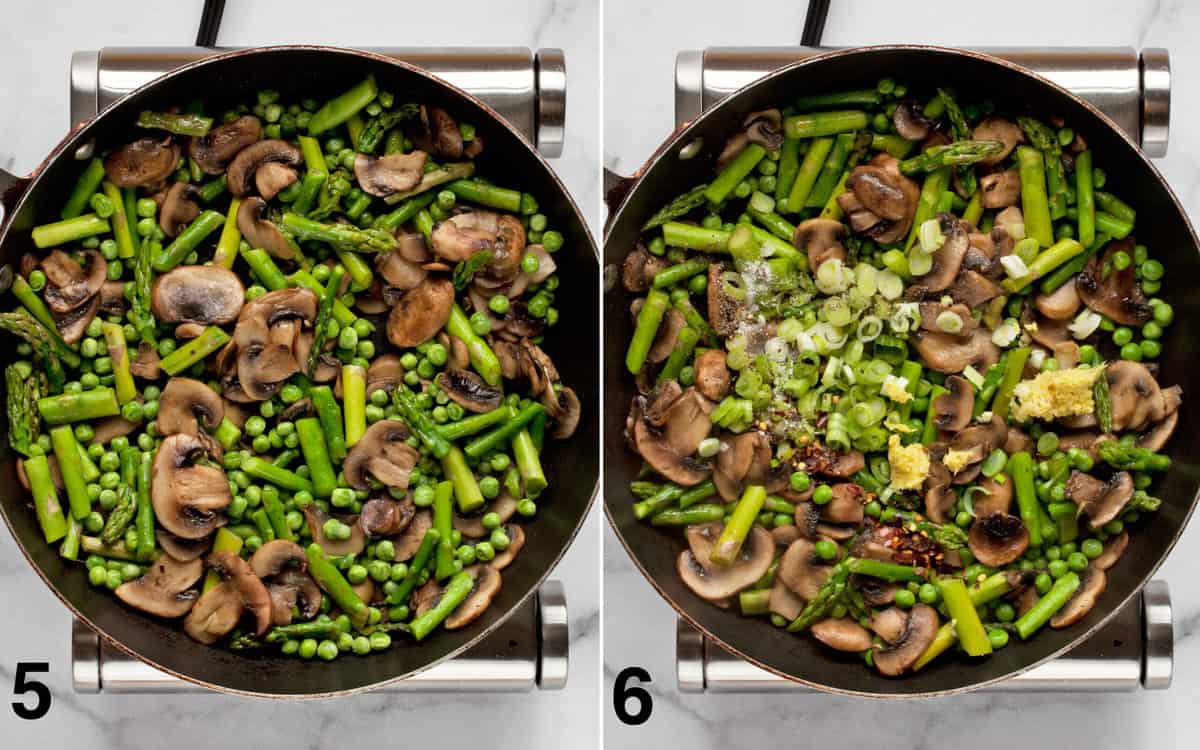
7. Fold in the noodles and pour in the soy sauce. Stir everything around, so the veggies and noodles are mixed together.
8. Finish the stir-fry with green scallions and sesame seeds.
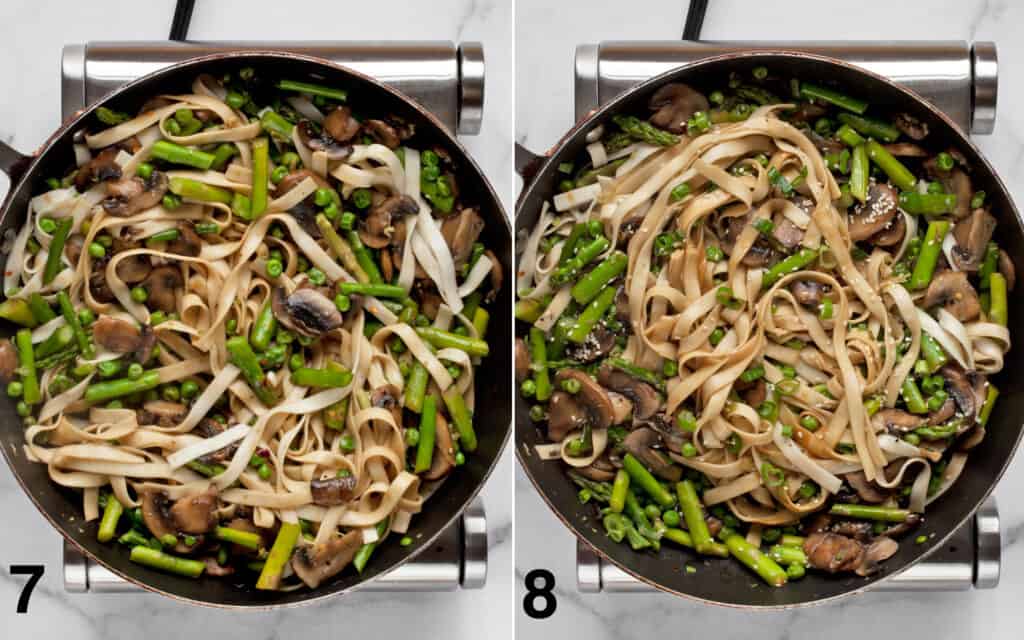
What to Serve with this Asparagus Stir-Fry
If you’re wanting for a salad to go with it, try a Cucumber Carrot Salad with peanut dressing or an Asian Cabbage Salad with red bell peppers and almond ginger vinaigrette.
Leftovers & Storage
You can store leftovers in an airtight container in the fridge up to 3 days. Either warm them up in the microwave or with a little oil in a skillet on the stove. They are wonderful eaten cold as a noodle salad, so you should not feel obligated to reheat them.
FAQs
Always trim off the woody ends on the bottom because they will be tough and not pleasant to eat. Then, depending how you are cooking it, you can leave the asparagus as is or slice it into smaller pieces. For roasting, you can roast entire spears. For stir-frying or sautéing, I like to cut it into 1-inch to 2-inch lengths, so they fit in the pan.
No. With this stir fry recipe, the asparagus will have plenty of time to sauté along with the rest of the vegetables. Also, you want the asparagus to be cooked but still have some bite. There is no need to blanch it in advance.
More Stir-Fry & Noodle Recipes
Tofu and Vegetables with Peanut Stir-Fry Sauce
Broccoli Pea Edamame Fried Rice
Sesame Soba Noodles
Frozen Vegetable Stir-Fry
Cashew Veggie Stir-Fry
Ginger Garlic Veggie Tofu Stir-Fry
Sesame Noodle Salad
Did you make this veggie stir-fry recipe? Please leave a rating and comment below. Thanks!
Mushroom Asparagus Stir-Fry with Noodles
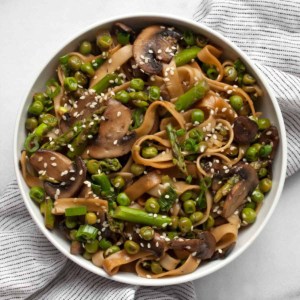
Ingredients
- 6 ounces wide udon noodles
- 1 tablespoon vegetable oil
- 8 ounces cremini mushrooms, sliced
- 1/2 pound asparagus, trimmed and cut into 1-1/2 inch pieces
- 1 cup peas, fresh or frozen
- 1 garlic clove, minced
- 1 tablespoon minced fresh ginger,
- 4 scallions, thinly sliced, white and green parts separated
- 1/4 teaspoon red pepper flakes
- 1/4 teaspoon kosher salt
- 1/4 teaspoon black pepper
- 3 tablespoons low sodium soy sauce
- 1 tablespoon sesame seeds
Instructions
- Cook the udon noodles according to package instructions. Transfer the noodles to a colander and rinse with cold water.
- Heat the oil in a wok or large skillet over high heat. When the oil is shimmering, sauté the mushrooms for 3 minutes until they start to soften and brown.
- Add the asparagus, and continue sautéing for 3 minutes. The asparagus will turn bright green.
- Stir in the peas. Continue sautéing for 2-3 minutes until the peas are cooked through, the mushrooms are browned and the asparagus is crisp tender.
- Stir in the garlic, ginger, white parts of the scallions, red pepper flakes, salt and pepper. Cook until fragrant, about 30 seconds.
- Stir in the udon noodles and the soy sauce, giving the noodles a couple minutes to warm up.
- Fold in the green scallions and sesame seeds.
Notes
Nutrition
Nutrition information is automatically calculated, so should only be used as an approximation.
Originally published May 25, 2015. Updated April 6, 2023.

